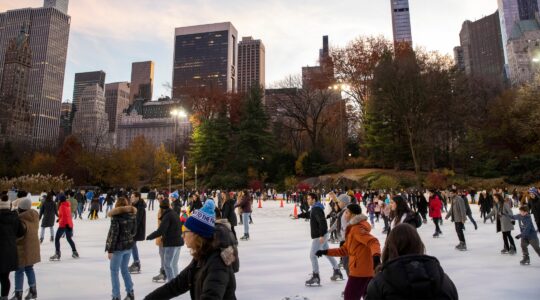Strolling around the pretty Spanish plaza at the heart of Old La Mesilla, Texas, watching children play and families chat in the public square, I thought: Why aren’t there more places like this in the U.S.?
It was a question I kept asking myself as Oggi and I drove across the southern U.S. on Interstate 10, stopping alternately at charming, historic tourist towns and sterile, chain-blighted commercial zones off the highway.
We spent hours navigating the sprawl east of Los Angeles — a vast, car-choked landscape of drive-thru fast food and strip malls — and then reveled in the aesthetic oasis of Palm Springs, where the affluent saunter through an attractive city center. From Santa Monica to New Orleans to La Mesilla, people love cities with walkable cores and a genuine, singular sense of place — and they love them so much that they are now rare, pricey commodities. So I wondered: Have human-scale towns and cities become just another luxury item?
The answer around Las Cruces, N.M. — at the intersection of the Texan and Mexican borders — was, apparently, yes. Occupying a scenic plain in the shadow of the Doña Ana Mountains, the greater Las Cruces metro area is a sad wasteland of downscale outlets and broad, faceless boulevards.
But La Mesilla, on its southern outskirts, is a picturesque glimpse of a pretty town of the Old West could have looked like — and a worthwhile stop just off I-10.
Centered around a 19th-century plaza, where the Basilica of San Albino was first erected in 1855, La Mesilla is a pueblo of low-scale adobe dwellings, tiny local shops and cafés along narrow, dusty streets. We browsed in stores selling colorfully painted Día de los Muertos masks, piñon coffee and fiery New Mexican chilies.
Las Cruces has a Reform congregation and a Chabad center, but La Mesilla positively breathes Spanish Catholicism — from plaques outside the basilica commemorating papal visits to monuments proclaiming against abortion. Still, the atmosphere here is diverse, a cultural mash-up of Mexican, Native American and Western American influences. Men wandered by wearing sombreros or ten-gallon hats; Mexican guitar players crooned and strummed by the gazebo on the square.
As I surveyed the scene, I wondered why La Mesilla couldn’t have simply expanded outward, incorporating more walkable lanes into nearby neighborhoods, instead of ending up as a marginalized tourist attraction. But when we continued on to El Paso — the biggest city in Texas that nobody has ever been to — we saw how a well-organized downtown can starve from neglect.
The entrance to El Paso from the I-10 is visually dramatic, cutting along the hilly Mexican border; across from Texas, the peaks and valleys of Ciudad Juárez sprawl in what appears to be a vast, endless metropolis of jumbled pastel dwellings. It’s a panorama at once stunning and disquieting in its sweep and evident poverty.
I learned that El Paso and Ciudad Juárez — among the continent’s safest and most dangerous large cities, respectively — together represent the largest bilingual, binational work force in the Western Hemisphere. The fluidity of this exchange over the Rio Grande Rift, which constitutes a natural division through the city, is evident in the many signs in Spanish and in the arrows pointing to foot crossings.
With its hilltop perch and neighborhoods of pretty 1920s houses, El Paso is an attractive city. Historic brick buildings and tidy sidewalks lend the city center a feeling of solidity. So I thought it rather a shame to encounter here yet another American urban downtown so badly in need of revitalization: those sidewalks were empty, and many central blocks had no evident commerce at street level.
But downtown is worth a stop for its museum district, where city planners have organized an ambitious array of cultural institutions. I was impressed at the breadth and quality of exhibitions at the El Paso Museum of Art, which, predictably, has strong collections in Western, Mexican and Native American art dating back a half-millennium. When we stopped by, a show of works by Kandinsky and Franz Marc on loan from the Guggenheim Foundation were on view, as well as paintings from the “Migrant Series” by Don Coen, an artist whose work casts an engaging spotlight on the quotidian reality of America’s farm laborers.
And I was hardly surprised to stumble upon the National Border Control Museum. What I did not expect to find was the nearby El Paso Holocaust Museum and Study Center, prominently occupying a nearby corner.
We learned that the museum was founded in the 1980s by local survivor Henry Kellen, opening first near the Jewish Community Center on the city’s West Side, and then, after a fire in the early 2000s, moving into its current home. With 5,000 square feet of permanent exhibition space, El Paso’s is one of just 13 freestanding Holocaust museums in the U.S. and the first in the Lone Star State.
As we left El Paso, we watched the sun set over the mountains of Ciudad Juárez, reflected on what a strange and fascinating corner of the country this is, and set off for the Texas Hill Country.
The New York Jewish Week brings you the stories behind the headlines, keeping you connected to Jewish life in New York. Help sustain the reporting you trust by donating today.




